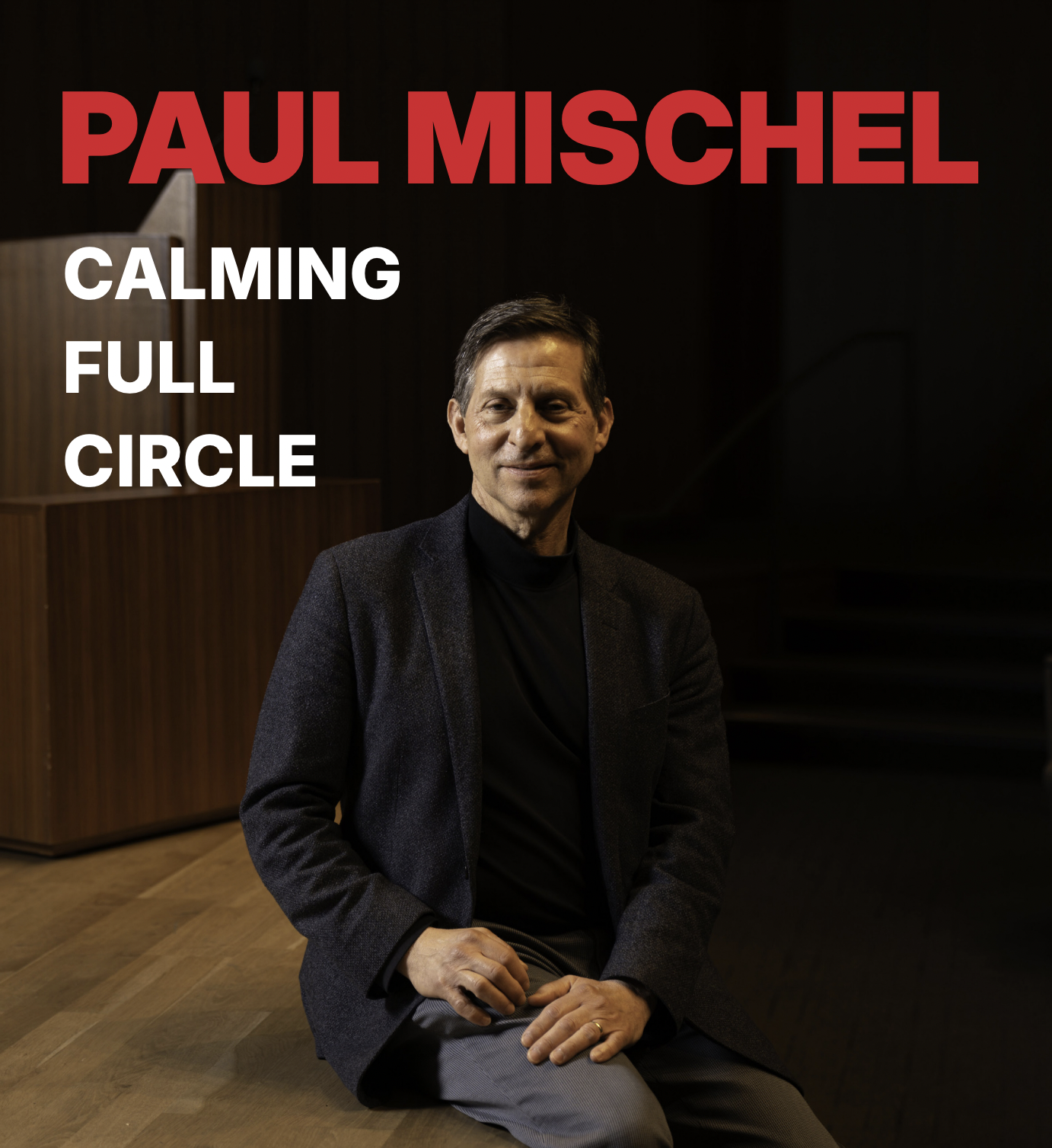When diagnosed with cancer, few things are more important than having confidence that the treatment you are prescribed is the best possible option for you. For many cancers, particularly the more common ones, the evidence for choosing one option over another is strong, even in second- and third-line treatments. But this is not true for all cancers, particularly not the more rare ones, where clinical trials evidence is hard to generate due to small numbers, and treatments are few because small markets offer little incentive for commercial drug development. In these cancers, clinical decision making is often made in the context of high degrees of uncertainty, and off-label prescribing ‒ using treatments that have not been trialled or approved for that specific indication ‒ is quite common. In those situations, oncologists and patients reach the best decisions they can based on all information available. But uncertainty over whether that decision really was the best option can be highly stressful.
For people in this position, the chance to test potential treatment options ‒ in a timely manner ‒ on a lab-grown version of their own tumour tissue would offer welcome additional evidence to inform their decision.
That possibility is now beginning to become a clinical reality, thanks to the serendipitous discovery around a decade ago, that it is possible to grow organoids ‒ small lab-based models made from a variety of tissue types or pluripotent stem cells ‒ that recapitulate some, though not all, characteristics found in the tissue from which they are grown. Cancerworld talked to researchers who are now working to use organoids to help inform treatment selection in patients.
A powerful tool
Organoids started to show their promise in translational medicine several years ago, leading them to be named ‘Method of the year’ by Nature. They have become popular in many areas of biomedical research, ranging from neurodevelopmental biology to virology and regenerative medicine. Most recently they have begun to find a role in a clinical oncology setting, helping inform treatment choices in situations of high uncertainty ‒ particularly in paediatric and other rare cancers.
Gastrointestinal organoids, the first to be developed from primary patient tissues in the lab of the prominent Dutch scientist Hans Clevers were taken from patients with cystic fibrosis and used to test new drugs to treat the condition. Before this, patients would take drugs for several months before it was possible to determine whether they were working or not; but with organoids, dozens of candidate drugs can be assessed for efficacy in just weeks.
In South America, in around 2015, organoids were used in the effort to investigate a suspected link between a sudden upsurge in the number of babies born with microcephaly and maternal infection with the Zika virus during pregnancy. In experiments that were widely covered in leading journals, including Science and Development, vital evidence was elicited by engineering organoids that mimic the developing foetal brain, infecting them with the virus and determining that they developed abnormally and to a smaller size than uninfected organoids.
As the use of organoids became more well-known and widespread, protocols to develop them from diverse tissue types were optimised and off-the-shelf kits for some organoid types became widely available and accessible, requiring only standard biomedical research lab facilities and expertise.
Organoids made from individual patients are increasingly used to investigate precision medicine approaches
Increasingly, due to their stem-like nature, but lack of formal transformation, patient-derived organoids are being used to investigate cancer evolution and identify and interrogate drug targets with technologies such as CRISPR/Cas9. The development of multi-organ chips links together many different types of tissue, even including blood and immune system components, allowing not only for tumour responses to drugs to be tested, but also toxic effects on healthy tissues.
Organoids made from individual patient organs are also increasingly used to investigate precision medicine approaches, and they present a particular appeal for rare cancers, which are often areas of unmet clinical need. Tumours are often heterogeneous and innovative treatments limited due to reduced awareness of these cancer types, the paucity of individuals with these cancers eligible for trials and the relative lack of markets to incentivise drug development.
Selecting treatments in glioblastoma
One of the toughest of the rarer cancers is glioblastoma, an aggressive type of brain cancer also commonly referred to as GBM. Although recent treatment advances have meant some patients living for several years after treatment, the disease is still essentially considered incurable.
“GBM has been an area where there has been minimal progress,” says Analiz Rodriguez, a neurosurgeon and research scientist at the University of Arkansas school for medical sciences. “All of us surgeons wish we could just cut it out, but GBM just keeps coming back.”
Rodriguez is the principal investigator for the high-grade glioma arm of a new clinical trial, which uses patient-derived organoids to test drugs for patients. “From some of the more recent work done in my lab, we’ve found just how amazing GBM is at overcoming therapies very rapidly. You always have a little bit of time where you think maybe you’ve won, things are going in the right direction, but it inevitably returns,” she says.
Rodriguez set up a biobank of brain tumours and matched blood samples from patients, doing genetic sequencing on their samples to try to identify targets for drugs. She recently expanded this to include patient-derived brain tumour organoids to further optimise precision medicine options for her patients.
Rodriguez mentioned the example of one patient who was diagnosed with glioblastoma in their early 20’s, commenting that, “In that situation, you are very much desperate to try and find a solution or a potential therapy.”
The patient had consented to have their tumour DNA sequenced, but in this case the results showed nothing that could help select a targeted therapy or treatment option. Rodriguez scanned the published research and came across work from a group in California that had used a different type of genetic sequencing, looking at levels of RNA from different genes, rather than for errors in DNA. Rodriguez reached out to the team, and they agreed to look at the patient’s RNA to see whether any suggestions for treatments could be made.
At around the same time, the patient was enrolled in a clinical trial with a US-based company which screened the patient’s tumour samples for 12 different drugs to identify any that might be beneficial. One was found and the treatment was administered, but he relapsed quickly.
“At this point, the patient would have a scan about once a month or every two months, and we would find another tumour. The patient told me they wanted to live as long as possible, so we thought to combine results from the clinical trial results and RNA analysis from the California group together,” says Rodriguez.
Although sequencing is useful in some cases, functional testing has great potential, and it can potentially be done on a larger scale”
This work suggested a combination of drugs, which were tested on organoids made from his tumour before being given to the patient. “On this combination therapy, he had disease stability for about four months, which doesn’t sound like a big deal,” says Rodriguez, “But with recurrent GBM, and if you look at disease progression, how he would usually recur within a month, we were very excited about that.”
The patient recently died, but Rodriguez hopes that the principles learned from that case will lead to application of the work on a wider scale. Does she see a future where every GBM patient has organoids generated to test therapies?
“I definitely think so. Although sequencing is useful in some cases, functional testing has great potential and it can potentially be done on a larger scale,” she says.
Bringing organoids into clinical practice
For tumour organoids to benefit patients in wider clinical use, they need to be grown quickly and used to test as many potentially useful treatments as possible. Alice Soragni, an Assistant Professor at the University of California at Los Angeles, is one of those leading efforts to make this happen.
Soragni focuses on developing high-throughput methods to use patient-derived organoids to test drugs. “I started this work when I was still a postdoc in the lab, and it was really painful to test even a single drug needing different concentrations and replicates, on tumour organoids. Everything took so long. We needed to make it far easier and simpler to do,” she says.
Soragni and her team developed a method to grow patient tumour derived organoids in 96-well plates. They used robotics to fill the plates with nutrient scaffold and with patient cells, and even to image the cells to see which drugs had been effective. A few years on, the team are now doing 3D bioprinting and further optimising their high-throughput systems.
“We’re currently looking at hundreds of sarcoma cases. These are very diverse tumours with many different subtypes. Depending on how you classify them, you end up with over 100 different sarcoma subtypes. All of these are rare and ultra-rare tumours and for many we have limited information on effective therapies,” says Soragni.
“This is a very short timeline from surgery to potentially actionable information. It is much faster than sequencing”
The team has now reduced the turnaround time from receiving the patient sample from a biopsy or surgery to getting results about drug sensitivities to within a week.
“This is a very short timeline from surgery to potentially actionable information. It is much faster than sequencing, and for some cases where the exact subtype of sarcoma is undecided before surgery and the pathologist needs to review tumour sections after the procedure, we can have screening results even faster than obtaining the final diagnosis,” said Soragni.
Currently, it takes the team one week from receiving the patient samples from a biopsy or surgery, to having the results about drug sensitivities. The next step will be not only to pass this information onto the treating oncologist but also to be able to leverage it clinically, to guide therapy. They hope to be able to do so in the near future in the context of a clinical trial.
Screening drugs for childhood cancer patients
Tumour-derived organoids are relevant not only for adult cancers. Paediatric cancers are all rare diseases and, aside from brain cancers, solid tumours in children are especially rare. These paediatric rare tumours are particularly challenging for drug development due to low numbers of children for trials and, again, little to no financial incentive for pharmaceutical drug development. This is a big challenge as, even within tumour types, paediatric cancers are sometimes dramatically different from their adult counterparts, and require different treatment approaches.
Jarno Drost works as a group leader at Princess Máxima Centre for Paediatric Oncology in Utrecht, The Netherlands. “What is so intriguing to me is that paediatric kidney tumours are fundamentally different from their adult counterparts,” he says. “In adults, for instance, these tumours are typically renal cell carcinomas caused by mutations in VHL or p53, but you hardly ever find these mutations in paediatric kidney tumours.”
The most common type of kidney tumour in children is called Wilms’ tumour, which is extremely rare in adults. Children also get renal cell carcinomas and rhabdomyosarcomas. The latter of these occur also in adults, but in adults they are associated with a dramatic number of DNA mutations. In children, by contrast, a limited number of, or even only a single, driver mutation is typically found which disrupts a unique process in the winding and unwinding of DNA in a cell.
Drost completed a postdoctoral fellowship in the lab of Hans Clevers, who famously created and optimised organoid technology from intestinal samples. These methods are now very well developed, and commercial kits for intestinal samples can be purchased off-the-shelf. But starting organoid culture from scratch on paediatric renal tumours was not easy, explains Drost.
“Wilms’ tumours, for example, are composed of different cell types, including stromal cells, epithelial cells, and a cell type known as blastema, which is an embryonic progenitor-like cell. We can maintain these three different cell types in our Wilms’ tumour organoid cultures, but sometimes different cell types do outcompete others over time.”
Despite the challenges, tumour-derived organoids have many advantages over traditional cell lines, where cultures are established from just one cell type, which often has a genetic advantage, allowing it to proliferate in culture, and which may not be representative of the whole tumour from the donor.
Drost is already running a drug screening programme for paediatric patients who have not responded to first-line therapeutic options
Drost and his team have a close working relationship with physicians and surgeons at his centre, allowing them to often start culturing the donated tumour within a day of the operation. They also receive tissue from international collaborators shipped chilled on ice, or processed and frozen.
“Usually, within one or two weeks, you should be able to see if organoids are growing,” says Drost, noting that the lab has managed to achieve around an 80% success rate in establishing kidney tumour organoid lines.
Drost is already running a drug screening programme for pediatric patients who have not responded to first-line therapeutic options, with the drugs included in the screen being FDA approved, or in trials, often for different types of tumours. Any potential treatment options identified are then discussed with the treating physician.
But the length of time sometimes taken to be able to feedback to the physician any potentially useful treatment information remains a challenge, says Drost.
“We have been able to screen once within three weeks after obtaining the material, but sometimes it takes seven months. So, it’s difficult to say ‒ it really depends on the tumour characteristics and the amount of material that we get. Taking more than six months to get sufficient material for drug testing is, of course, not really something that you would like to implement in a diagnostic pipeline.” He is now running a pilot project which is taking samples from children with relapsed Wilms’ tumours from all over Europe, which he hopes may optimise the logistics of scaling up the use of the organoids.
Crucially, he is also using organoids to ask questions about treatment-related toxicities, which he does by integrating healthy organoids into his drug screens to see how they are impacted by the different agents. It’s a big issue in children, he points out, “because they have to deal with that for a long period of their lives.”
Children who survive cancer typically experience both acute and chronic toxicities from their treatment, with one major study estimating that 88% of childhood cancer survivors will experience at least one chronic health condition by their forties.
Healthy kidney tissue is often available from patients if a kidney removal is required as part of treatment, and organoids grown from this are included in the drug screens to identify any toxicities. But treatment-related toxicities frequently occur in other ‘off-target’ organs, so his drug screens also include ‘healthy’ organoids from other organ types to look for potential damage. These include liver, lung and gastrointestinal tissues, although these are sourced from other donors, and not matched to the patients, to avoid subjecting the patient to unnecessary biopsies.
Prospects for clinical practice?
For a technology that has only been around in earnest for less than a decade, the increasing rate of uptake of organoids in the cancer field is striking. Representing a clear advantage over traditional cell lines for in vitro studies, organoids also have potential to replace some animal experiments, as well as optimise personalised medicine approaches in rare cancers and beyond.
Whether the technology finds a place in daily clinical oncology practice, and if so when and in which settings, remain to be seen ‒ a search for guidelines for their clinical use yielded no results. A precedent has been set in cystic fibrosis, however, where reimbursement is being granted in some cases for drugs selected by intestinal organoid assay and further studies are ongoing to expand this.
For more on testing for off-target organ toxicities, particularly in paediatric oncology settings, see also Long-term health: is it time to update the priorities of cancer research?
Illustration by Sara Corsi












